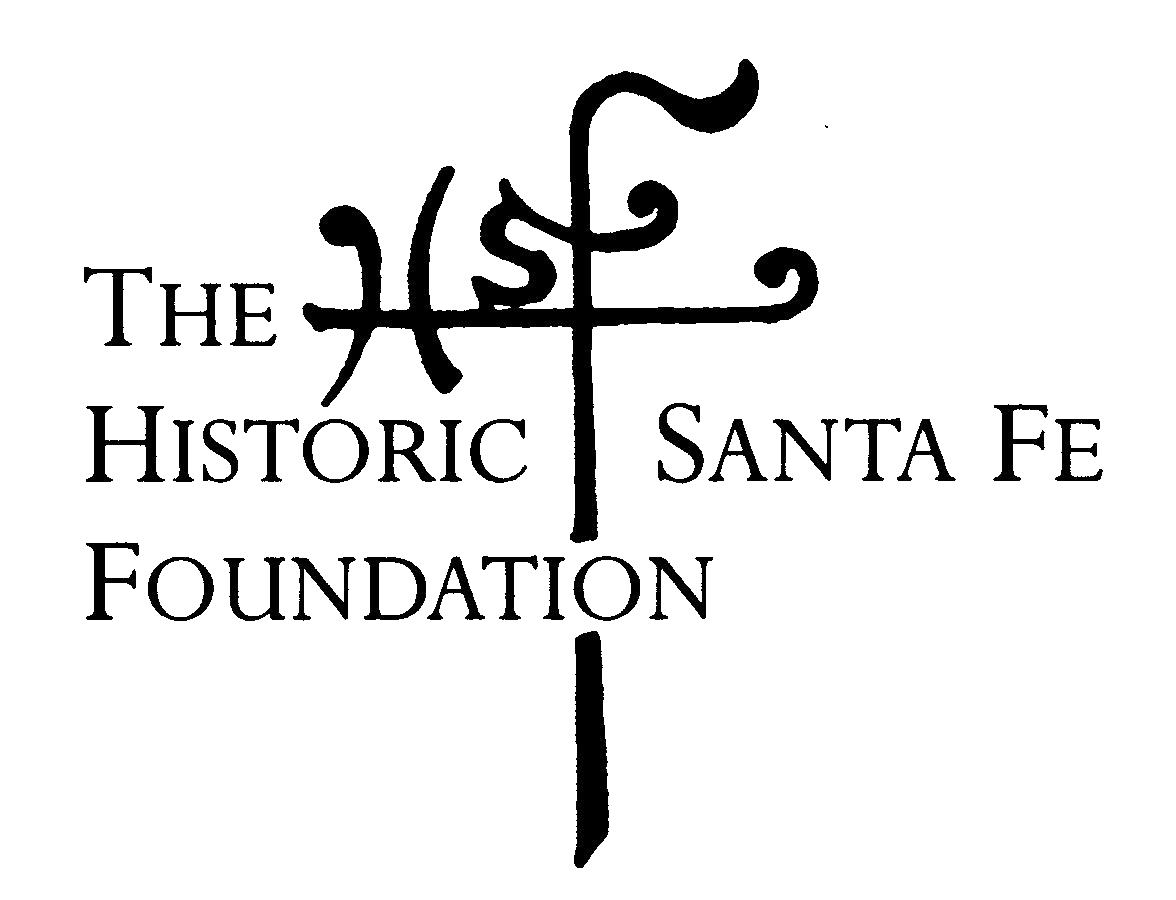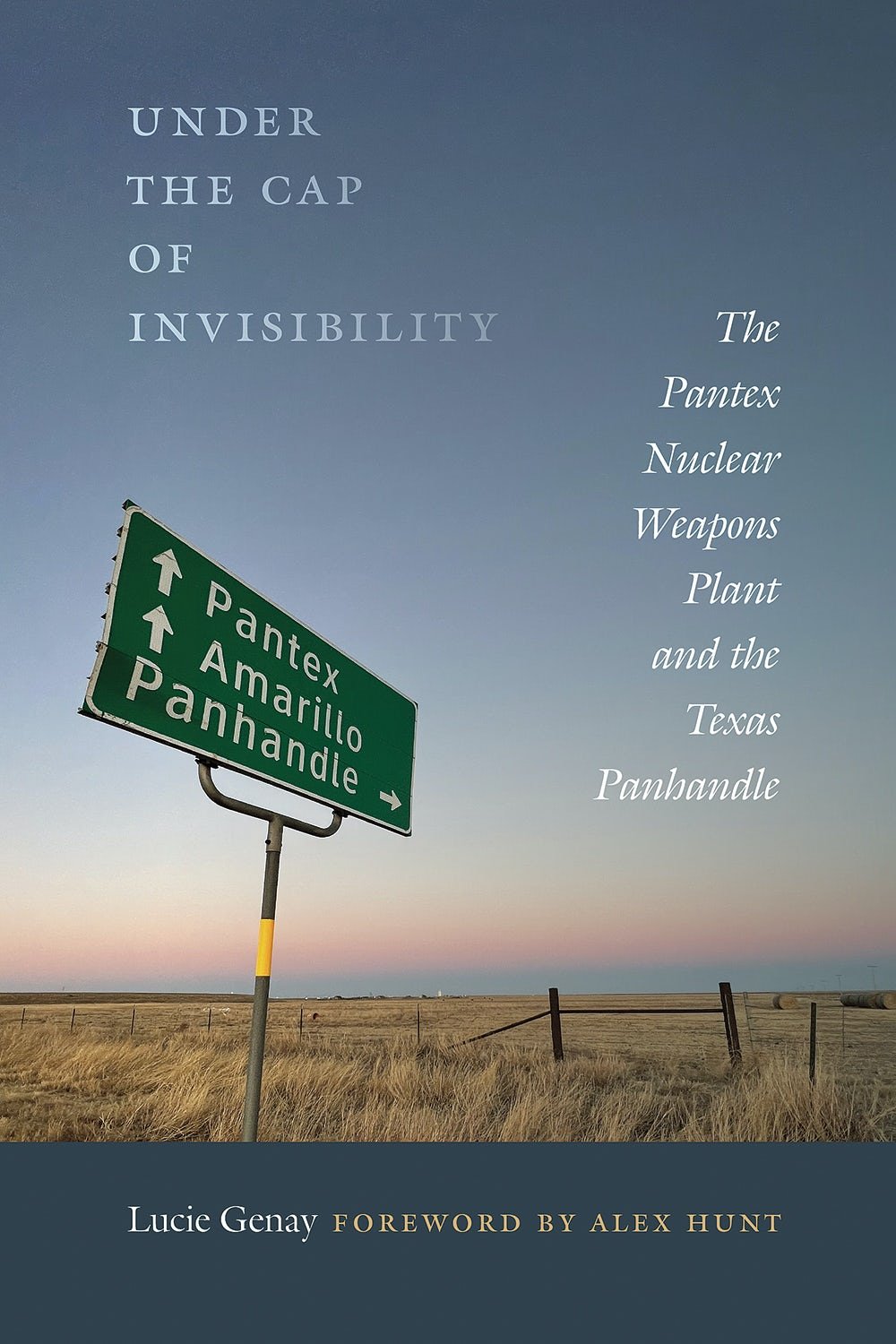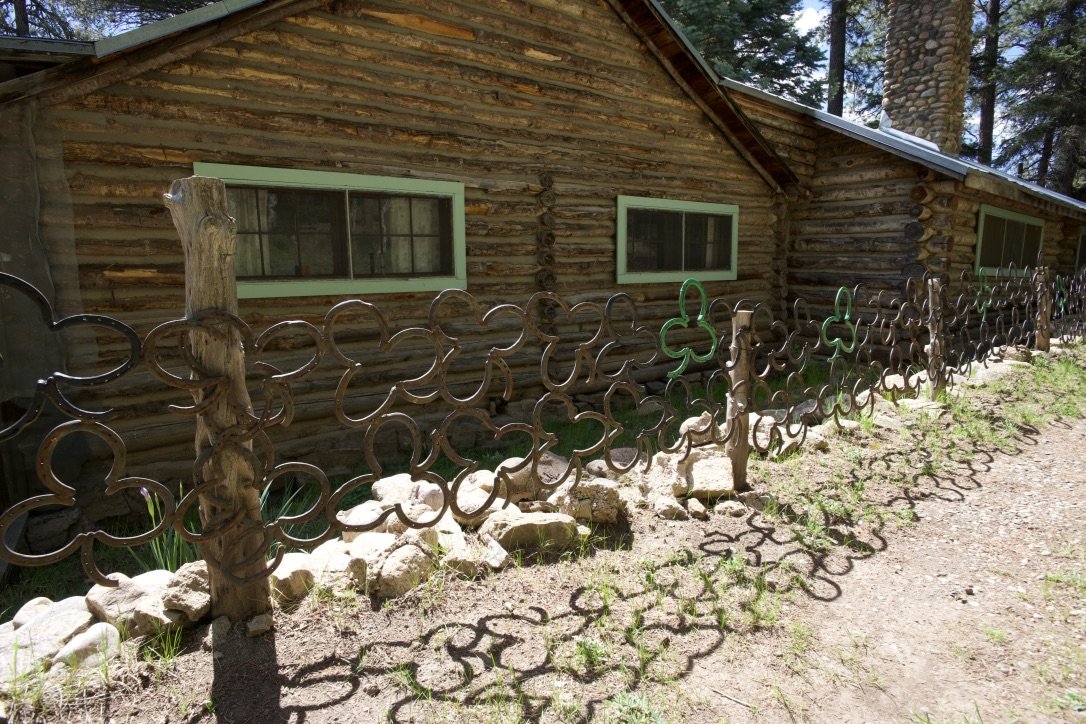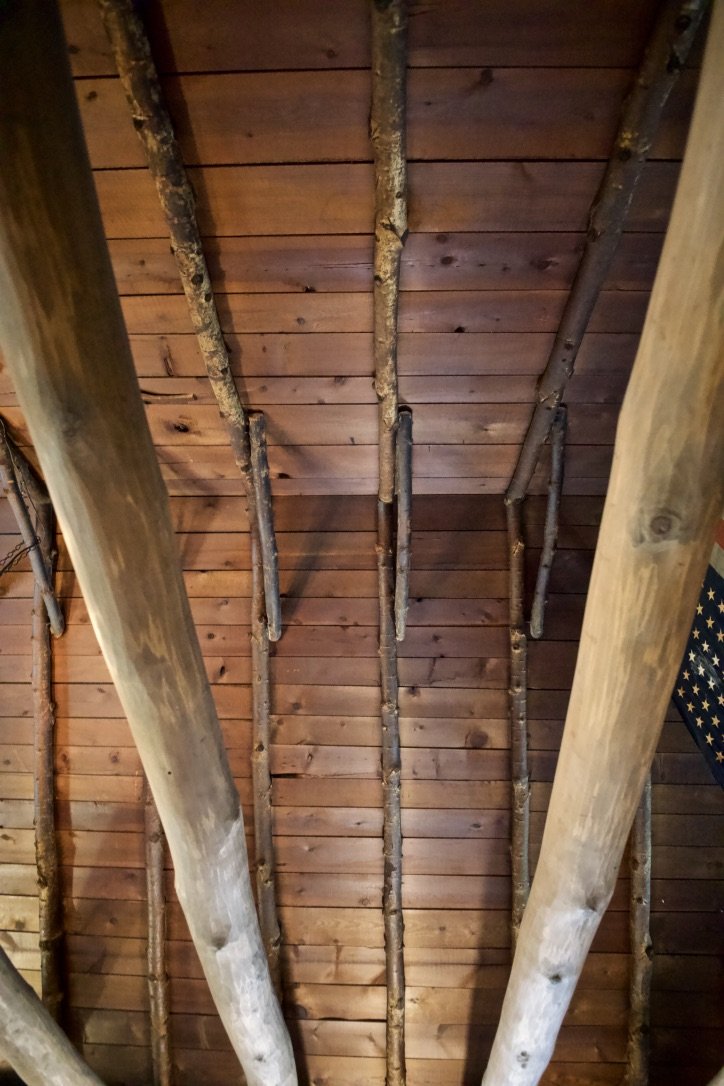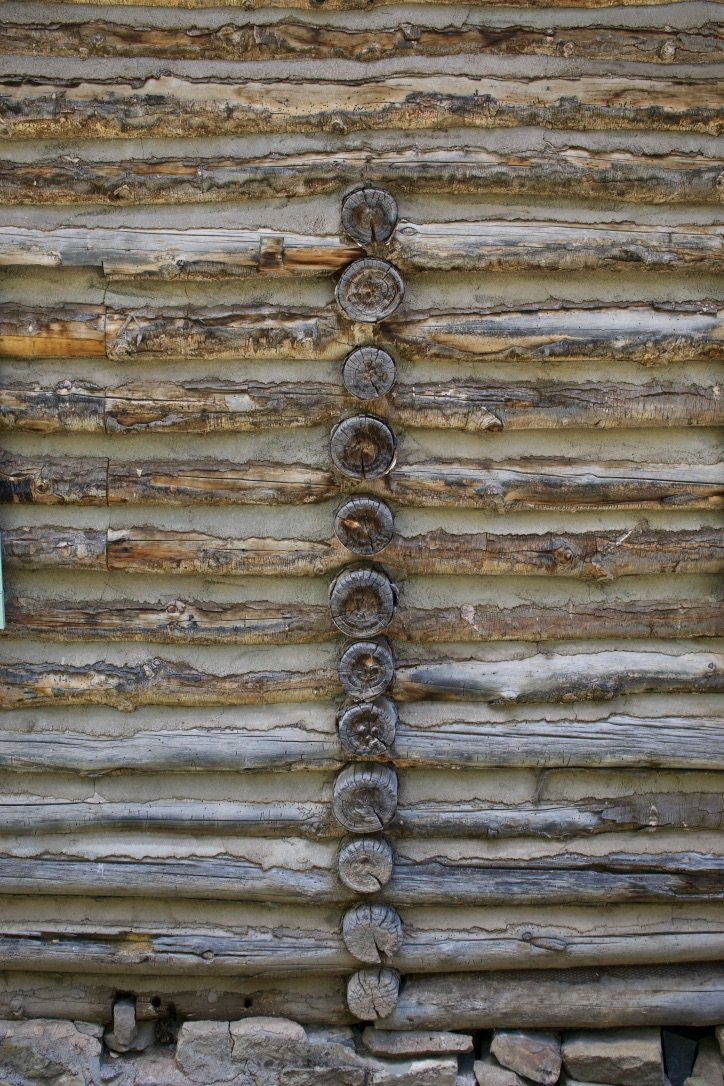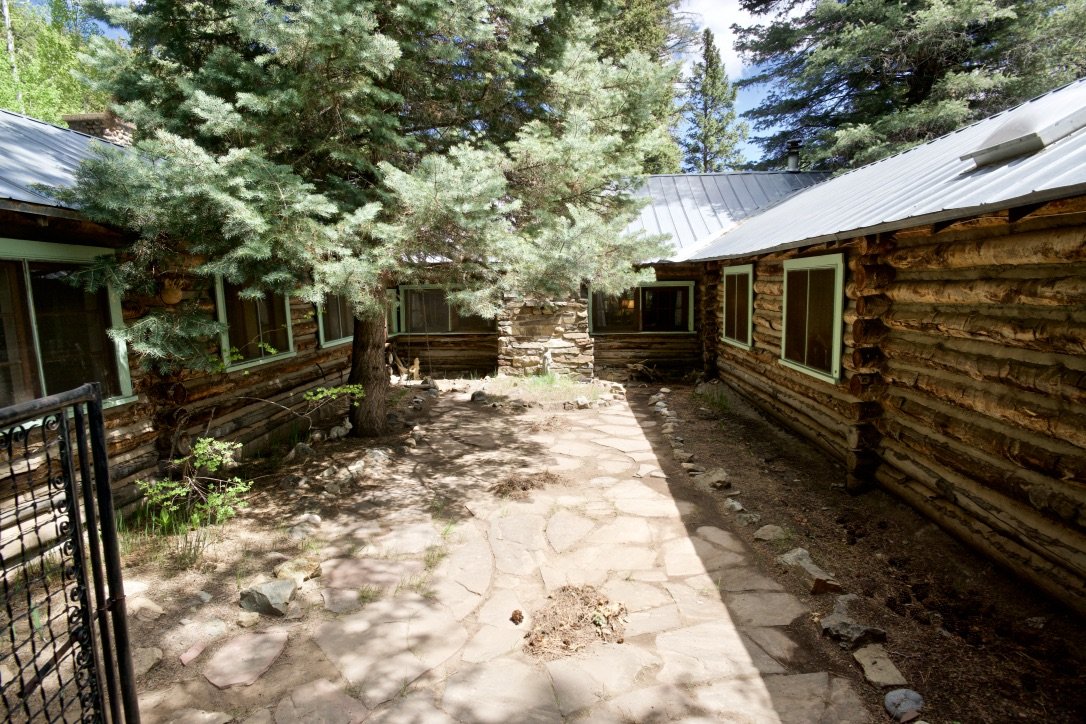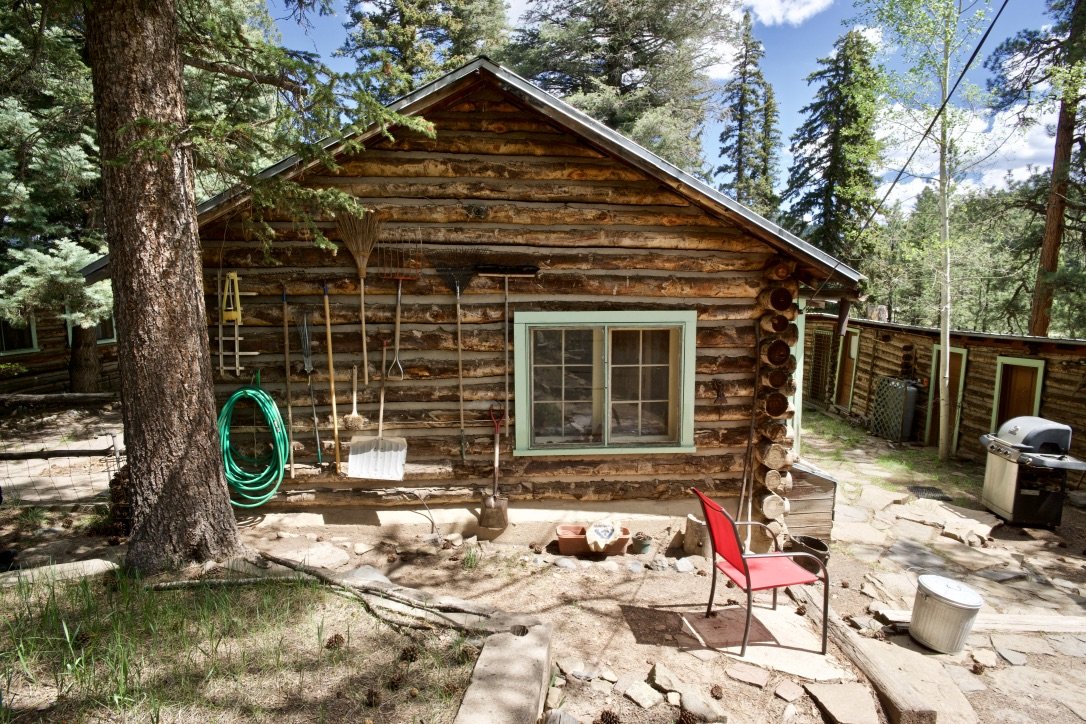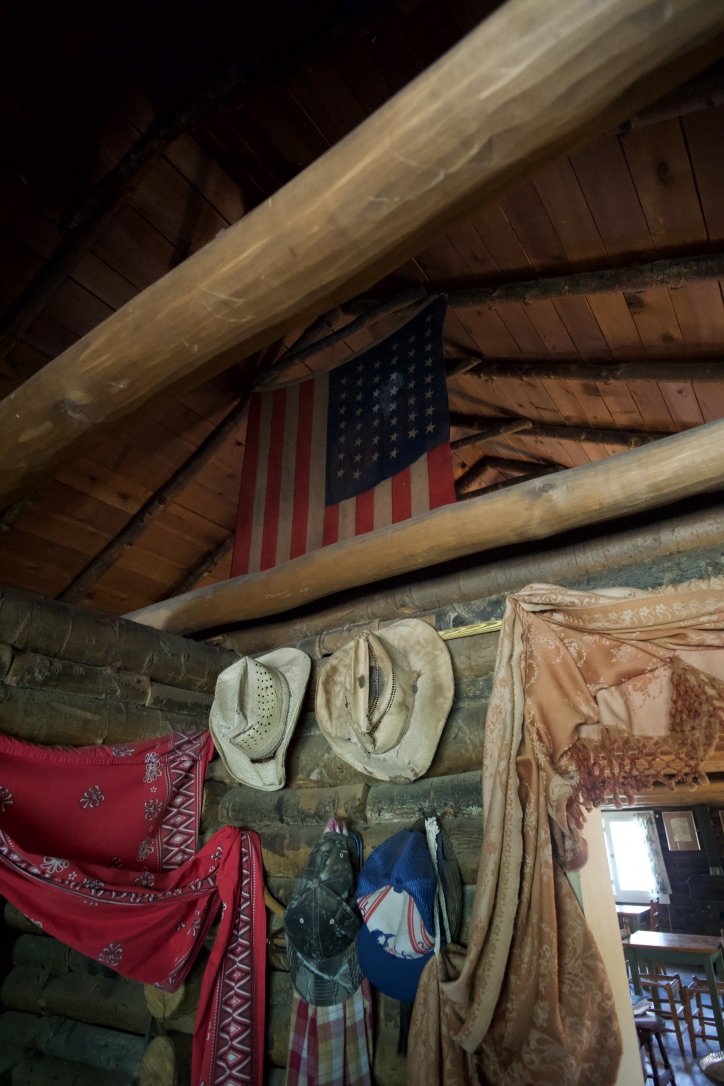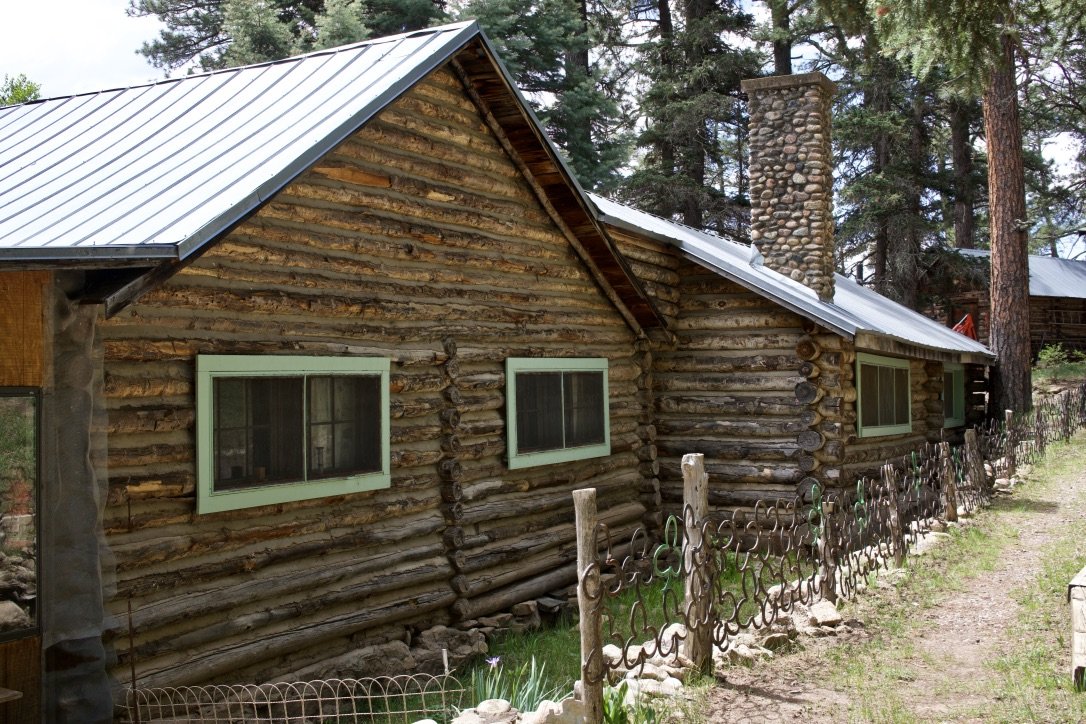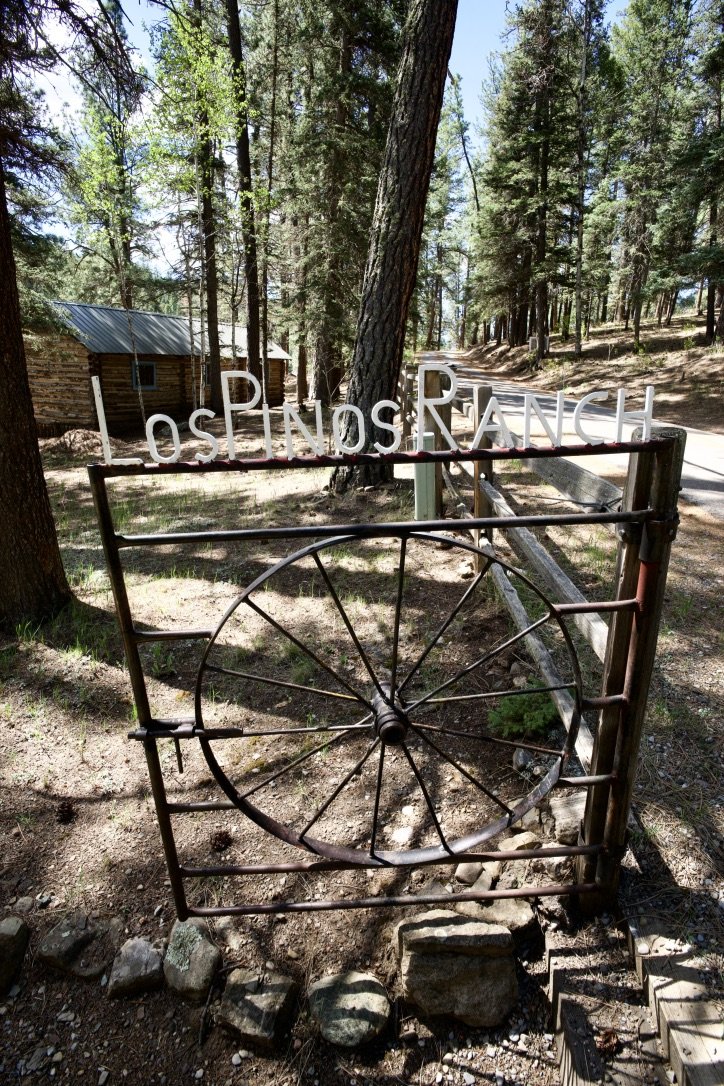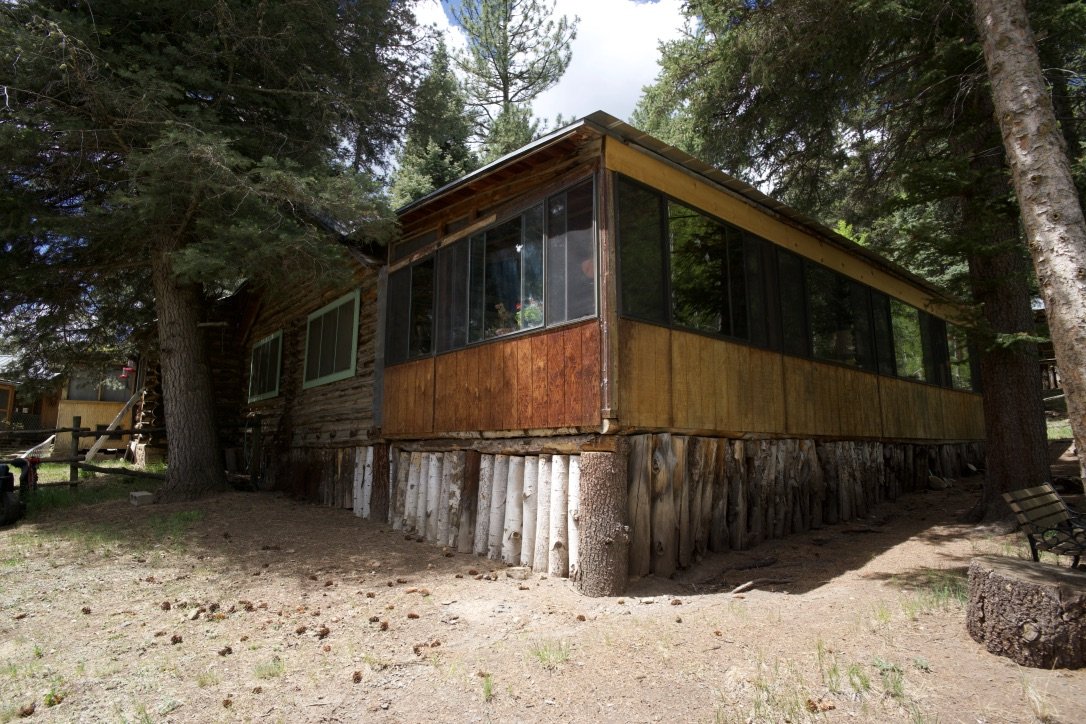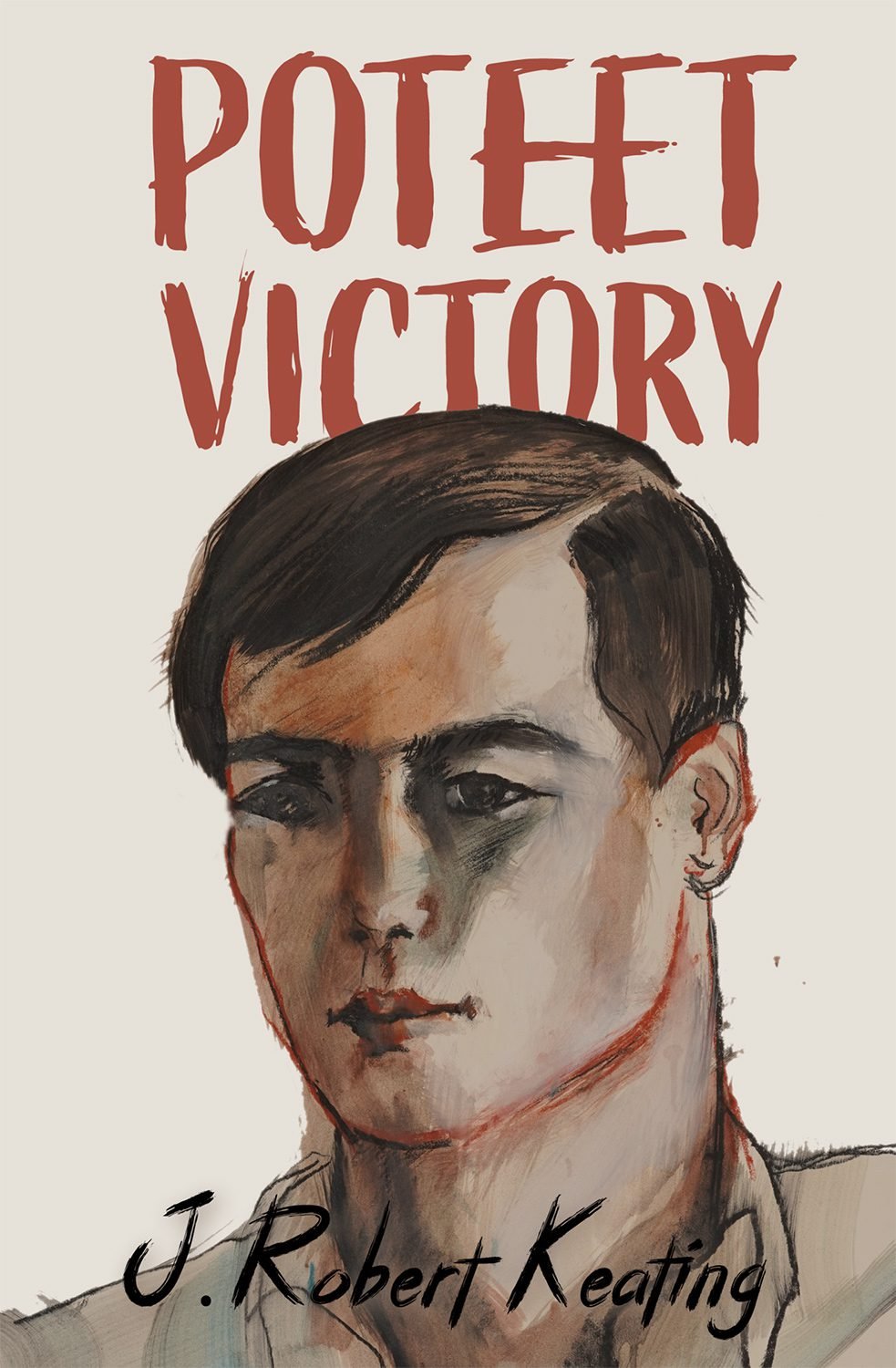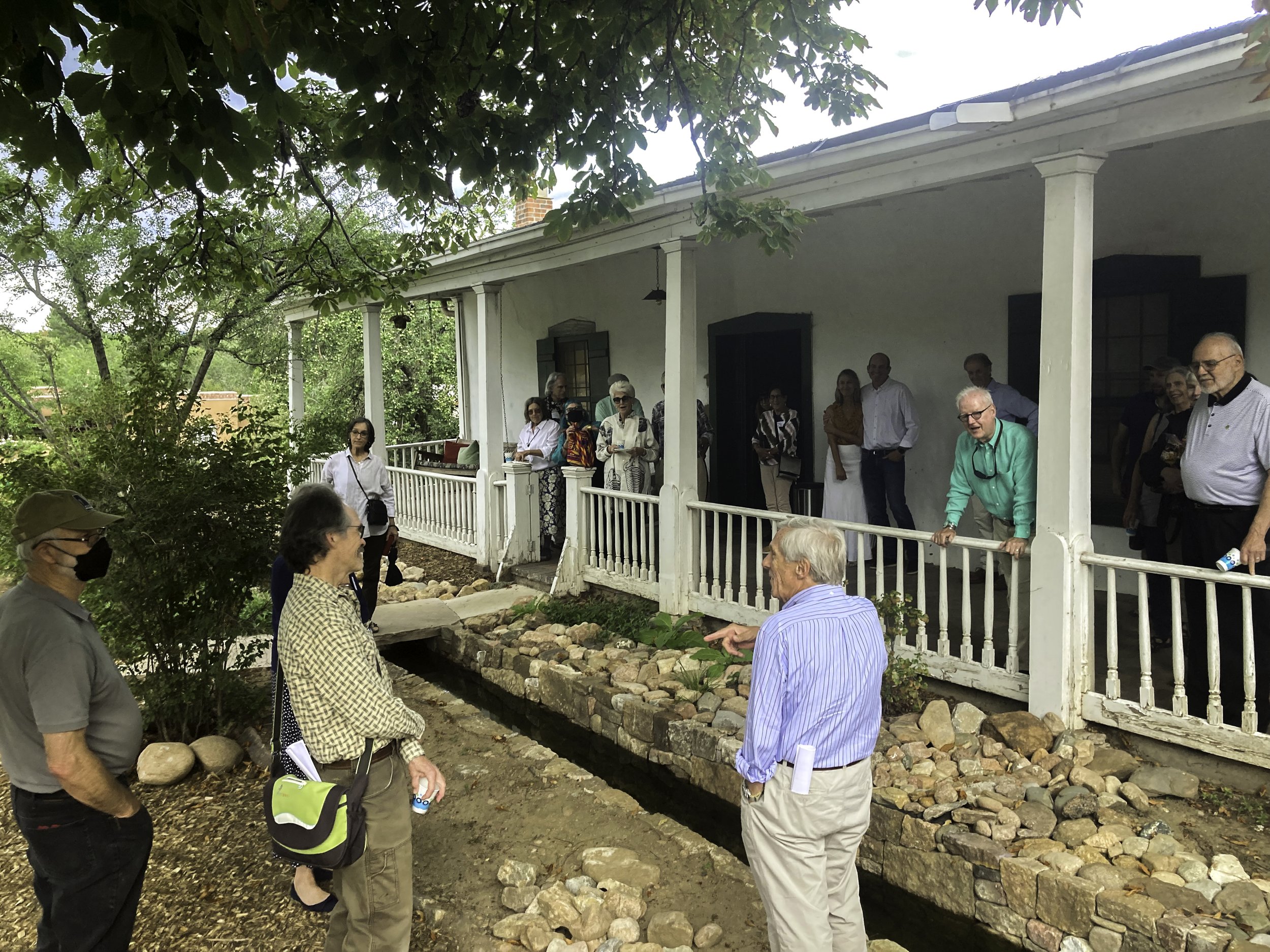Book review by Pete Warzel
There are three clues that Under the Cap of Invisibility is a scholarly work from a university press. The first is that academic books tend to have subtitles with more words than the title proper. Check. The second is that fifty eight pages of notes and twelve full pages of bibliography are a dead giveaway. The third is price. At $85 this is an academic work. That is unfortunate because although the research is impeccable, it does not read like a bookish treatise, rather it moves with the verve and good writing of a literary thriller. Lucie Genay writes a very good story. The UNMP may have priced themselves out of a popular book.
Lucie Genay is an associate professor of US civilization in the American Studies Department of the University of Limoges, France. She has taught English and American history there since 2009 and has focused her research and writing on the nuclear history of New Mexico. This book crosses the border into the Panhandle of Texas and the very interesting social, economic, and cultural environment around Amarillo. Genay states at the start of the book, “The objective of this book is both historical and anthropological….” It is that double focus that makes the work so deeply fascinating and rings true with the cultural milieu that is home to Cadillac Ranch, that Stonehenge of deceased Cadillacs, and The Big Texan Steak Ranch, with its 72-ounce steak challenge.
So, Pantex. The book cover is photo of a Texas highway road sign that points to Pantex, Amarillo, and Panhandle. You would think it just another town east of New Mexico. One premise of the book is that Consolidated Nuclear Security, LLC, the operator of Pantex for the US Department of Energy, would probably like you to think that, as hinted at by the main title – the cap of invisibility. I spoke to a friend of ours who has moved to Santa Fe from the Panhandle, and when asked about Pantex she was familiar with the name but could not remember what it was. My wife asked if it was town. Invisible.
Pantex is our country’s “sole assembly and disassembly plant for nuclear weapons….” The story here of its founding and obscure history fits the zeitgeist of the Panhandle. Nuclear and environmental protests struggled against a very compliant business climate in Amarillo until the local ranchers, deep in their history of the area, became concerned about the quality of water for their operations, for their cattle, and for their crops they were sending into the world in proximity to nuclear waste and accident.
Today there are 3,300 workers at this 16,000-acre facility on the Texas plains. Started as a conventional ordnance manufacturing plant during World War II, the facility evolved into several variations of nuclear-warhead assembly, disassembly, and storage. It is big business for Amarillo and Randall County, but comes with the gradual development of a good deal of angst in the local population. Genay takes a very close look at the political and sociological makeup of Amarillo and the surrounding county: conservative, religious, independent minded, and the tough can-do attitude blended with the business-first attitude of the state of Texas. Then of course there is the huge benefit of jobs and ancillary economics for the city. The benefits and historic attitude evolve to an attitude towards Pantex as the “benevolent nuclear bomb manufacturer…,” “benevolent” being the key word, “bomb manufacturer” not so much discussed. “The story of this book is how the pressure of pursuing growth can lead communities to willfully relinquish critical oversight and participate in the invisibility of the makers of their success.” The slogans printed at the plant and the newsletter sent out to employees tell of propaganda directed at a very willing population, the result being economic, religious, and patriotic excuses for living with fear.
Until the nuclear protests began, and then environmental activist appearances on site, Pantex existed quietly, mostly invisibly, in the countryside. There begins a questioning and some friction, and Genay dissects the religious arguments, the philosophic investigations of good for the country, supporting defending freedom by nuclear deterrence through manufacturing, and the “In God We Trust” attitude of a patriotic population.
She gives the entire history of place and function, setting a stage for the rationalization of the pros and cons, benefits and risks without taking a side, rather letting the facts and the people speak, and the book speaks so clearly in doing so. She waits until the final chapter to let the workers speak, as accidents and illness come to the fore, having been hidden in the history presented. Making an analogy to the canary in the coalmine trope, one worker states, “’We are those canaries.’ The pride remains of having worked on weapons that help to ‘keep this country free…,’” but there is a realization locally that “the same weapons had put workers ‘in bondage to illnesses.’”
A lot of this is unknown or forgotten history. Having lived in Denver for years I have not thought about the Rocky Flats plant disaster in a very long time. My memory was tweaked by this book, as well as the memory of my wife, Denise, who transferred from Atlanta to Denver with IBM, to serve their customer at Rocky Flats. I asked her about her experience there in database management during 1986 and 1987, and she said they knew something was up, there were whisperings, but she believed, as did most people there, that surely the government would not put people in jeopardy knowingly. The thick concrete walls assured safety. Ironic then that Pentax was a target site for the transference of plutonium pits for storage from Rocky Flats, after it was forced to shut down due to the disastrous waste chemicals and plutonium contamination following the “Operation Desert Glow” raid by the FBI in 1989. Pu pits are the hollow spheres of plutonium that are the core of the nuclear warhead or bomb. When explosives compress the sphere, a nuclear explosion occurs.
Lucie Genay has done extensive research for a scholarly history of this almost invisible plant on the Panhandle plains of Texas, 72 miles across I-40 to the state border at the ghost town of Glenrio, Texas/New Mexico, straddling both states. She makes the connections to the other nuclear sites situated in the American west – away from major populations but inherently making the inference that this geographic population does not matter very much. She has written an excellent, readable book of parallel lives and stories that is a necessary and fascinating read.
